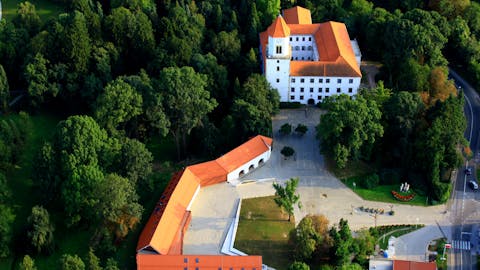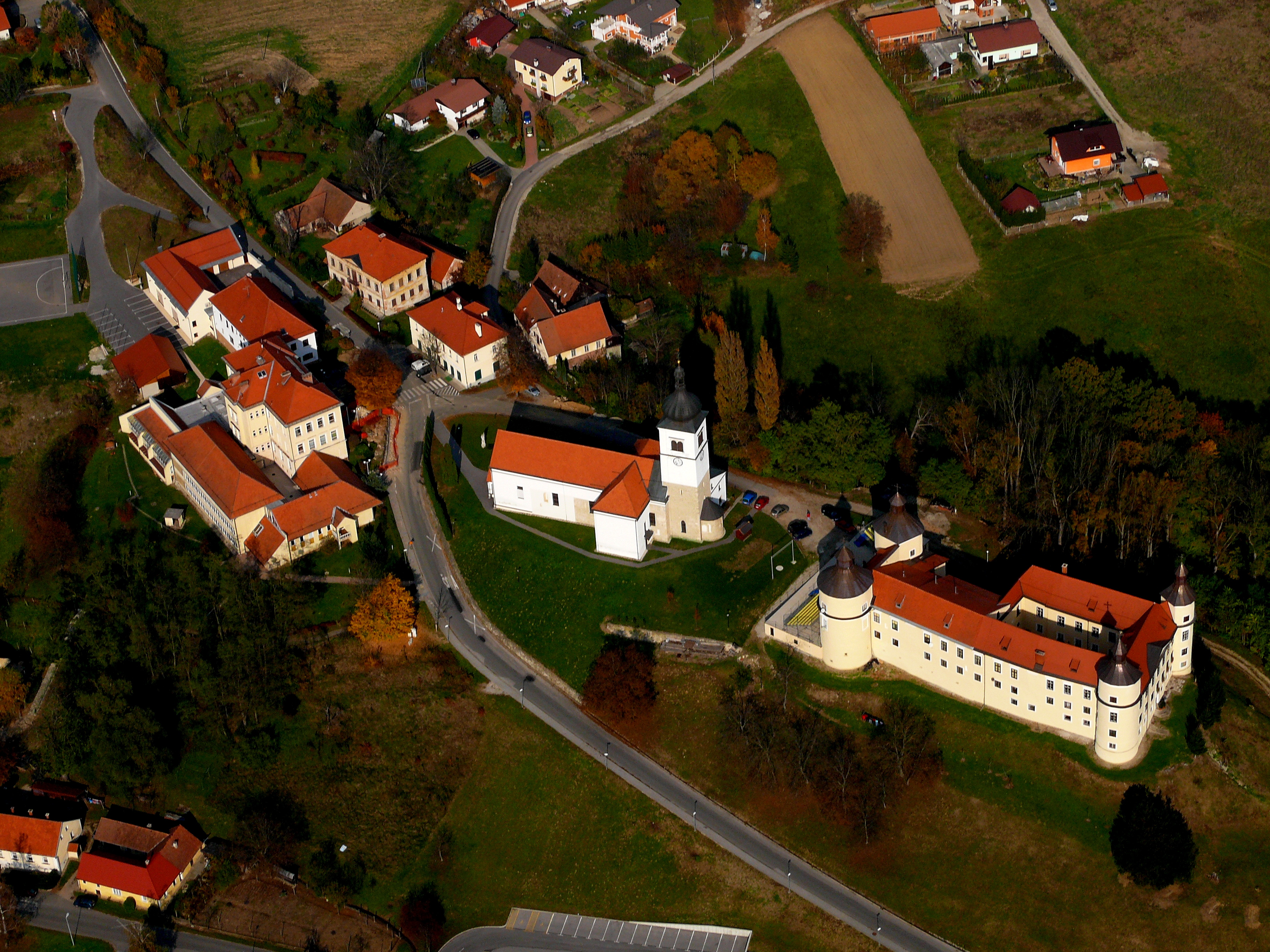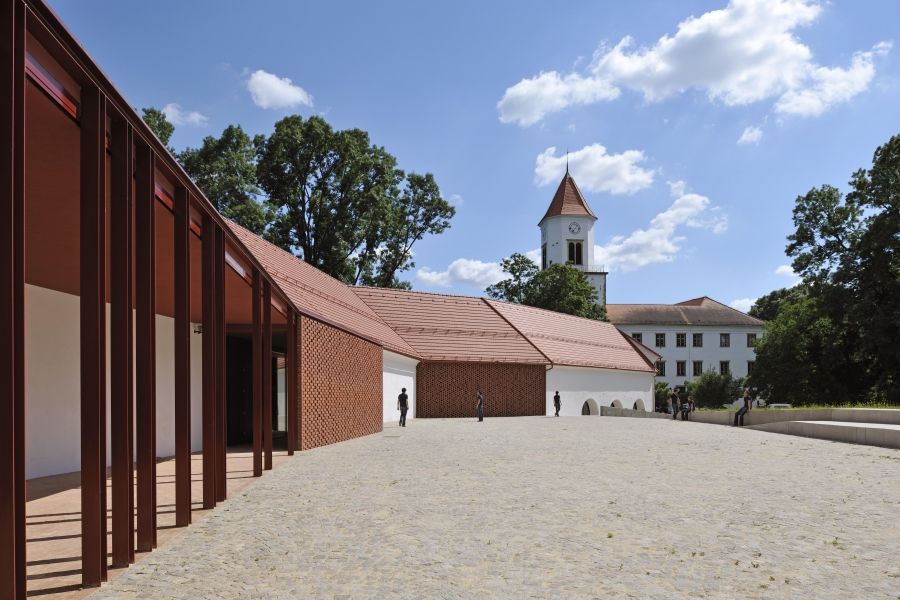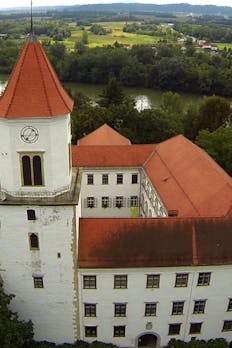
ORMOŽ MUNICIPALITY
Ormož Castle and Its Estate Outbuilding
Ormož Castle stands on the southeastern part of a Bronze Age settlement, which was fortified with an earthen rampart and a defensive moat. The moat accompanies the castle complex along its entire eastern side and at the end of the outer bailey turns toward the former Hungarian town gate. The Lords of Ptuj began building the castle complex in the last third of the 13th century. The castle remained in the possession of the Ptuj family until 1438, when the lineage died out. In the first phase of the castle’s development, the present southern wing was most likely built, housing the residence of the Ptuj castellans, the Lords of Ormož, after which the large walled courtyard at the northeastern corner was secured with a strong tower.
The further development of the castle was accelerated by events at the end of the 15th century. After it was burned down in 1487, the Szekely family took possession of it in 1490, settled here, and restored it for their use. They built the northern and western wings and perhaps also the beginnings of the eastern one. In 1532 the castle was damaged by the Turks, and in 1540 it was rebuilt during the fortification of the town. After the attack by the Kuruc army on February 12, 1704, the castle remained devastated for a long time. Between 1710 and 1740 it was restored in Baroque style by the Pethe family. At the beginning of the 19th century, the castle was purchased by industrialist Jožef Pauer, who had it renovated in Classicist style and enclosed the southwestern castle garden with a wall. The last owners of the castle were the Counts Wurmbrand-Stuppach, whose coat of arms can still be seen above the main castle entrance. Today, visitors to Ormož Castle can view the tapestries of Marij Pregelj, the castle cinema, and several exhibitions: From the Legacy of Dr. Otmar Majerič, Ormož in the Time of Karađorđević and Tito’s Yugoslavia, the Marko Sluga Collection, and the archaeological exhibition Between the Drava and the Mura.


The castle outbuilding is a structure that combines several farm buildings, built in different periods from the 18th century onwards. Based on preserved historical sources, it is known that the farm buildings once extended directly to the castle, but part of them was later demolished. The most beautiful rooms of the outbuilding are still adorned today with preserved Tuscan stone columns and six pilasters in the museum section, as well as a barrel-vaulted hall on the ground floor of the music school. Here you can see both permanent collections and temporary exhibitions prepared by the Ptuj–Ormož Regional Museum, which manages both the outbuilding and Ormož Castle. They also offer guided tours and a variety of activities for young visitors of all ages. Don’t forget to stop by the shop, where almost everyone will find something for themselves.
OPENING HOURS
Summer opening hours, April 1 – October 31
Mon – Fri: 09:00–17:00
Sat: 09:00–15:00
Sundays and holidays closed, visits possible by prior arrangement.
Winter opening hours, November 1 – March 31
Mon – Fri: 09:00–16:00
Sat: 09:00–15:00
December 24 and 31, Shrove Tuesday: 10:00–12:00
Sundays and holidays closed, visits possible by prior arrangement.
CONTACT
Grajski trg 1, 2270 Ormož
T: +386 (0)2 741 72 90

